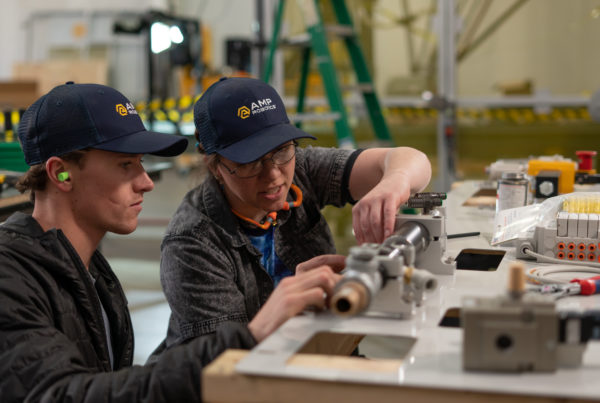Training Tips for Fire Prevention Month
This week’s Industry Voices was written by Ryan Nolte, Ph.D., ISRI’s director of safety outreach.
If a fire breaks out at your facility, you and your team need to be prepared and know what steps to take. October is Fire Prevention Month, and ISRI offers resources to help you maintain safe operations. Here are three tips on how to deal with fires.
Fire Training Tip #1: Determine whether employees will “fight or flee.”
Deciding whether employees fight a fire at your facility or escape is a critical decision. Businesses should consider whether evacuating a building during a fire is the best way to reduce the risk of fire-related injury or death. They should also determine whether exit routes could be vulnerable, and if a public fire department is available.

If your emergency action plan includes employees fighting a fire, only designated, trained employees should fight a fire. Keep in mind fire extinguishers are to be used during incipient-stage fires, i.e., only when the fire has first started.
Whether you decide to fight or flee, fire doors should never be locked or blocked while people are in a building. A building needs to have a minimum of two exits in case of a fire. Depending on the building’s size, more exits may be required. Exit routes also should be clearly identified by evacuation maps or other signage on walls.
Fire Training Tip #2: Know how to use a fire extinguisher before you need to use it.
Fire extinguishers are labeled to indicate the type of fire they’re designed to put out, as well as the size of fire they’re able to cover. Knowing the type and size of fire your fire extinguisher can handle is valuable information before a fire starts. Using the wrong type of extinguisher on a fire could be dangerous and potentially make the fire worse.
For most fire extinguishers, you’ll need to pull the pin, aim low towards the base of the fire, slowly squeeze the lever, and sweep the nozzle from side to side at the base of the fire.
If a fire has spread to additional fuel sources or is too hot to fight without protective gear, do not use a fire extinguisher. Evacuate the building and let the fire department handle the situation.
Fire Training Tip #3: Hot work permits.
Like fire safety checklists, hot work permits help by creating a standardized safety process that helps to mitigate fire risk. Filling out a hot work permit will help workers consider cold work alternatives, review precautions, and actively monitor a hot work site until it’s safe. Examples of hot work include welding, cutting, grinding, and torching. Hot work processes create sparks, which could ignite material and start a fire.
Everyone involved in hot work is responsible for ensuring the conditions are safe and hazard-free before beginning the hot work. At a minimum, hot work needs to involve two individuals — the person performing the hot work and the fire watch. Ensuring the work area is free of material that could ignite or combust is critical to hot work safety. If conditions are not safe to begin hot work, stop and wait. It’s simply not worth the risk of starting a fire.
[ISRI’s Guide to Creating a Fire Prevention and Management Plan]
Now that we’ve reviewed the basics of a fire prevention plan, schedule time on your calendar to go through a fire safety checklist; what gets scheduled gets done. Regularly completed fire safety checklists help mitigate fire risks and prevent a fire from happening in the first place. Fire safety checklists also help your team become aware of fire-related hazards and keep fire safety top of mind.
Your team needs to know what steps to take should a fire ever occur at your facility. Think for a moment: When was the last time your team conducted a fire drill? Would your team fight or flee? The most important thing to take away from fire safety training is that you can prevent a fire from happening in your facility—and potentially save lives.
Follow ISRI throughout Fire Prevention Month for actionable fire prevention tips. Consider signing up for ISRI’s Hazard Recognition: Fire Safety & Prevention in Recycling training. ISRI developed the four-hour, two-day online class to help employees, team leads, supervisors, plant managers, and senior leadership understand hazards associated with fires in recycling and materials recovery facilities (MRF). The next course is Oct. 14-15.
For more information on the course and fire prevention as a whole, contact Tony Smith, ISRI’s vice president of safety, at tsmith@isri.org, or Ryan Nolte, Ph.D., ISRI’s director of safety outreach, at rnolte@isri.org.
Disclaimers
The information provided in this article is not intended to replace site or company-specific training on the recognition and control of hazards in the workplace. It is the responsibility of the employer and its employees to comply with all pertinent OSHA/safety rules and regulations in the jurisdiction in which they work.










